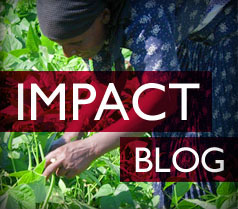- Agriculture and Food Security
- Democracy, Human Rights and Governance
- Economic Growth and Trade
- Education
- Environment and Global Climate Change
- Frontiers in Development
- Gender Equality and Women's Empowerment
- Global Health
- Science, Technology and Innovation
- Water and Sanitation
- Working in Crises and Conflict
Pandemic Influenza and Other Emerging Threats

About 75 percent of new human diseases are caused by microbes that originate in animals.
Some of these diseases–HIV/AIDS, SARS, Influenza, and Nipah–have caused regional or global epidemics that resulted in high mortality or significant economic losses.
Population growth and expanded interactions between people, animals and the environment over the coming decades are expected to increase the emergence of new pandemic threats.
The highly infectious H5N1 avian influenza (AI) virus continues to infect poultry and people (59 percent death rate for known cases) and research suggests that the rapidly evolving virus may only be a few mutations away from causing an influenza pandemic. While not yet “pandemic ready,” the virus continues to be a public health threat in affected and at-risk countries.
To minimize the impact of pandemic threats on human health and economic and social stability, USAID is:
- Reducing the current pandemic threat posed by H5N1 AI.
- Preparing countries for a possible pandemic.
- Strengthening detection and response capacities in locations where new pandemic threats are likely to emerge.
These efforts build on USAID’s ongoing effort to forge “one health” alliances across public health, agriculture, environment, economic growth and education.
Throughout its field missions and regional platforms, USAID’s Pandemic Influenza and Other Emerging Threats Program (PDF) helps advance the objectives of the International Partnership on Avian and Pandemic Influenza (IPAPI) and the International Health Regulations (IHR) by enhancing disease detection and response capacities at the country level.
USAID assistance has elevated pandemic threats on national agendas, coordinated efforts across human and animal health, mobilized and leveraged resources, increased transparency in disease reporting and built capacity to identify and respond to disease threats, particularly those with pandemic potential.
USAID continues to support mitigating the impact of novel “high consequence pathogens” arising from animals through the promotion of early detection, effective control, risk mitigation and preparedness.
- Since 2005, USAID has strengthened capacities in more than 50 countries to prevent, detect and control H5N1 AI.
- Since 2007, USAID has supported 30 countries in Africa and Asia to establish national coordinating bodies for pandemic preparedness.
- In fiscal year 2009, USAID supported deployment of more than 70 million doses of the H1N1 pandemic vaccine to more than 60 countries and helped upgrade H1N1 surveillance and laboratory capacities of 26 countries in Africa and Latin America.
- Since 2009, USAID has supported disease surveillance, risk mapping and outbreak response in 20 countries where new disease threats are most likely to emerge from animal populations.








Comment
Make a general inquiry or suggest an improvement.